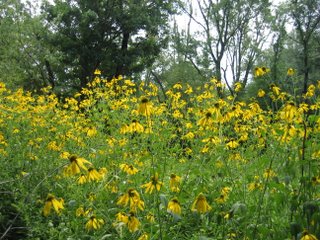The goal of the workshops is to support local gardeners in their efforts in various ways. Some projects in the works:
- Grow local genotypes of native wildflowers and shrubs from locally collected seeds and cuttings.
- Visit local remnant native plant communities that can serve as models for backyard gardens.
- Help participants learn to identify plants and their preferred sun and water levels, and gain confidence in identifying weeds.
- Show how to put rainwater runoff to use in the garden.
All of the activities will seek to connect gardeners and gardens to the broader landscape of Princeton—its nature preserves and the ecological forces at work there. One of the most disruptive forces in local preserves are the invasive exotic species--the same species that invade backyards and serve as the default landscape in untended areas.
As part of the first workshop, I brought in a newly fashioned model of the typical understory of a local preserve. Though most trees in Princeton are native, the understory is a motley crew of mostly exotic shrubs that can easily be identified in winter by various traits such as thorns, twig color, and opposite or alternate branching.
This high-tech photo of the equally high-tech model shows the pirate ship of invasives sailing the troubled ecological seas of Princeton’s greenspace.
A sequel to this posting will feature an ark of native species, currently besieged by the exotic legions but whose tide could turn with the help of some human intervention.








































